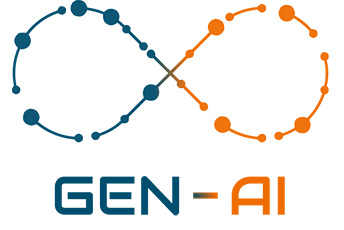Use Case: Invoice Auditing with Discrepancy Identification
General Description: Invoice auditing is a critical process for identifying discrepancies and errors that may affect an organization’s accounting, accounts payable/receivable, and cash flow. A generative semantic model that processes PDFs can automate this process by extracting key data, comparing it with purchase orders, contracts, or budgets, and highlighting inconsistencies that need attention.
How It Works
- Uploading Invoices in PDF: Users upload invoices to the system in PDF format, along with related documents (e.g., purchase orders, contracts).
- Document Processing:
- The model analyzes each invoice to extract key information such as:
- Supplier details.
- Invoice number and issue date.
- Total amounts, taxes, and applied discounts.
- Payment terms.
- It compares the data with reference documents, such as contracts or purchase orders, to verify consistency.
- The model analyzes each invoice to extract key information such as:
- Discrepancy Identification:
- Highlights differences between the invoice and the reference document (e.g., different amounts, undelivered services).
- Detects common errors, such as duplicate invoices, inconsistent amounts, or miscalculated taxes.
- Report Generation:
- Summary of the analyzed invoices.
- List of discrepancies found and their financial impact.
- Recommendations for resolving errors or requesting clarifications from the supplier.
Practical Example
Scenario: A company receives 200 invoices monthly from various suppliers and needs to automatically audit their validity before processing payments.
Process with the Model:
- Document Upload: Invoices are uploaded to the system along with the associated purchase orders.
- Model Analysis:
- Invoice 1: Identifies that the total amount ($10,500) is $500 higher than the original budget in the purchase order.
- Invoice 2: Detects that the applied tax rate (15%) does not match the contractual rate (10%).
- Invoice 3: Finds a duplicate invoice issued by the same supplier with different dates.
- Report Generation: The model generates a summary with:
- Invoices analyzed: 200.
- Conformant invoices: 180.
- Invoices with discrepancies: 20, including issues with amounts, taxes, and duplicates.
- Recommendations: Request the supplier to correct the tax rate in Invoice 2 and verify the duplicate in Invoice 3.
Benefits of the Model in Invoice Auditing
- Time Savings:
- Automates the review of extensive invoices, drastically reducing the time needed to detect errors.
- Discrepancy Identification:
- Highlights inconsistencies between invoices and reference documents, helping to prevent incorrect payments.
- Improved Accuracy:
- Eliminates the risk of human error in manual invoice validation.
- Cash Flow Optimization:
- Ensures that only correct invoices are processed, avoiding duplicate or incorrect payments that could impact cash flow.
- Report Generation:
- Produces detailed reports with clear data on detected discrepancies and recommended actions.
Additional Applications
- Accounts Receivable Management:
- Validates that invoices sent to customers are consistent with contracts and orders, minimizing conflicts.
- Regulatory Compliance:
- Ensures invoices comply with applicable tax and accounting regulations.
- Fraud Prevention:
- Detects unusual patterns, such as duplicate invoices or unknown suppliers.
- Historical Analysis:
- Audits past invoices to identify trends or recurring errors.
Practical Example
Additional Scenario: A finance department needs to audit invoices from the past six months to identify possible inconsistencies before an external audit.
Without the model:
- Analysts manually review hundreds of documents, taking days and increasing the risk of errors.
With the model:
- The system automatically processes all invoices, identifying discrepancies such as incorrect amounts and duplicate invoices, generating a report ready for the audit in just a few hours.
Conclusion
Automated invoice auditing with a generative semantic model transforms a manual and error-prone process into a fast, accurate, and efficient task. By detecting inconsistencies, highlighting discrepancies, and generating clear summaries, the model helps businesses improve financial control, optimize cash flow, and ensure that transactions are processed with full confidence. It is ideal for finance departments handling large volumes of documents.


